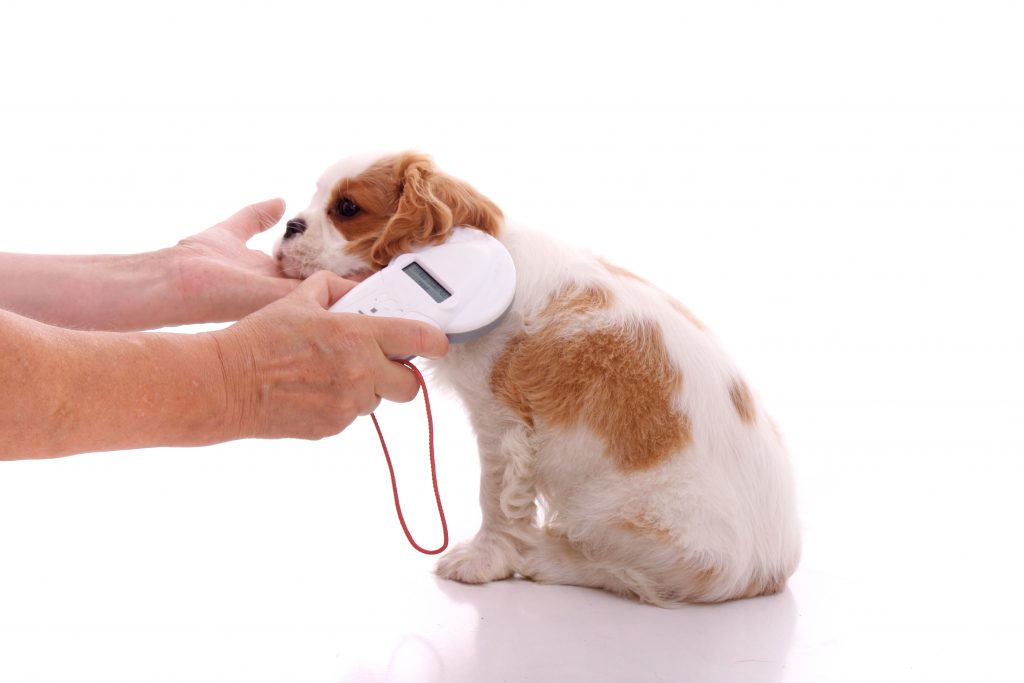
Pet Microchipping: Turning Lost into Found
Millions of pets go missing each year. Unfortunately, very few of them are ever reunited with their owners. Many of them become and remain strays. Others are taken to pounds or shelters, where they are all too often, euthanized. The luckier ones are saved by rescue organizations and ultimately placed in adoptive homes.
But it doesn’t have to be this way. Lately, an increasing number of conscientious cat and dog owners have begun to rely on a dual form of protection for their precious family companions. Included in this “protective package” are two forms of identification: ID tags and microchips.
Pet ID tags are small metallic or plastic tags personalized with your name, address and phone number that are attached to your cat or dog’s collar. These tags are as close as your nearest pet supply store or online vendor, and if your cat or dog ever goes missing, will immediately identify you as the owner.
Microchipping is a simple and safe procedure. A veterinarian or vet tech injects a microchip designed especially for animals—the size of a grain of rice—beneath the surface of your pet’s skin between the shoulder blades. Similar to a routine shot, it takes only a few seconds and most animals don’t seem to even feel the implantation. Unlike ID tags, a microchip is permanent and, with no internal energy source, will last the life of your pet. Your pet must then be promptly registered with the microchip company (some charge a one-time fee, others do not), thus storing his or her unique, alpha-numeric code in the company’s database.

Whenever a lost animal appears at a shelter, humane society or veterinary clinic, he or she will automatically be scanned for a microchip. If there is one, the screen of the handheld scanner will display that cat or dog’s specific code. A simple call to the recovery database using a toll free 800 number enables the code to be traced back to the pet’s owner. This means that in order for the system to work efficiently, all owners must keep their contact information up to date.
The most complete microchips comply with International Organization for Standardization (ISO) guidelines. These standards define the structure of the microchip’s information content and determine the protocol for scanner-microchip communication. They also include the assignment of a 15-digit numeric identification code to each microchip; 3 digits either for the code of the country in which the pet was implanted or for the manufacturer’s code; one digit for the pet’s category (optional), and the remaining 8 or 9 digits for that pet’s unique ID number.
As with anything else, however, problems can and do arise. Not all shelters, humane societies, and veterinary offices have scanners. Microchips can fail, though it’s rare, and even universal scanners may not be able to detect every microchip. Accurate detection can also be hampered if pets struggle too much while being scanned or if long, matted hair, heavy coats or excess fat deposits cover the implantation site. And because there are an ever-increasing number of pet recovery services, there is, as yet, no single database that links one to the other.
Since no method of identification is perfect, the best way owners can protect their cats and dogs is by keeping current ID tags on them, microchipping them, and never allowing them to roam free.
Furry Friends, a no-kill cat shelter in Vancouver, offers low cost pet microchipping at various events throughout the year at Esther Short Park in Vancouver. Visit their booth at the Peace and Justice Fair in September and the Recycled Arts Festival in June. At these special events, the cost for microchipping your cat or dog through Furry Friends is only $20 (a $60 value).





